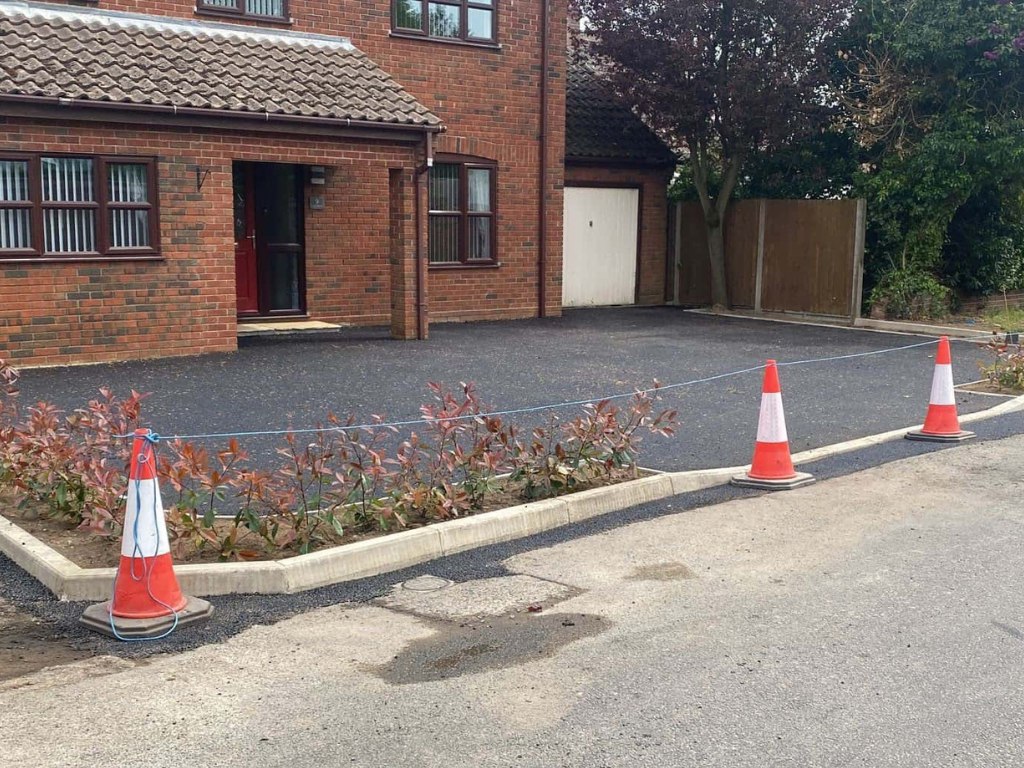New Build Tarmac Road Design and Planning: A Roadmap to Success
Introduction: When planning a new build project, the design and construction of roadways are critical components that demand careful consideration. Tarmac, also known as asphalt, is popular for road surfaces due to its durability and versatility. Gravesend Driveways will guide you through the essential aspects of designing and planning tarmac roads for new build developments in this blog post.
1. Traffic Analysis:
Before diving into road design, conduct a thorough traffic analysis to understand the anticipated volume and type of traffic the road will handle. Consider factors such as vehicle size, weight, and frequency. This analysis will help determine the road’s capacity, width, and necessary features.
2. Road Classification:
Classify the roads within your development based on their intended use. Typically, roads fall into categories like arterial roads (main thoroughfares), collector roads (connecting neighbourhoods), and local roads (residential streets). Each category has specific design standards and requirements.
3. Road Width and Alignment:
Determine the appropriate road width based on traffic analysis and the road’s classification. Road alignment should consider factors like topography, drainage, and existing infrastructure. Proper alignment ensures safe and efficient traffic flow.
4. Drainage and Water Management:
Effective drainage is crucial to prevent water from pooling on the road surface. Plan for proper drainage systems, including roadside ditches, culverts, and stormwater management features. Use permeable tarmac to allow rainwater to infiltrate the surface, reducing runoff and environmental impact.
5. Pavement Design:
Select the appropriate tarmac pavement design based on traffic loads and soil conditions. This includes determining the thickness and composition of the tarmac layers, which may include base courses, binder courses, and surface courses.
6. Geometric Design:
Consider the road’s geometric design, which includes features like curves, intersections, and roundabouts. Properly designed intersections and curves enhance safety and traffic flow.
7. Road Markings and Signage:
Integrate road markings, signage, and lighting into your design to ensure safe navigation, especially at intersections and pedestrian crossings.
8. Environmental Considerations:
Take into account the environmental impact of your road design. Sustainable practices such as using recycled materials in tarmac production and implementing green infrastructure can reduce the project’s ecological footprint.
9. Local Regulations and Permits:
Familiarise yourself with local regulations and obtain the necessary permits for road construction. Compliance with local guidelines is essential to avoid delays and legal issues.
10. Maintenance Planning:
Consider long-term maintenance requirements during the planning phase. A well-maintained road will have a longer lifespan and lower overall costs.
Conclusion: Designing and planning tarmac roads for new build developments requires careful consideration of various factors, from traffic analysis to environmental impact. Collaborating with experienced professionals and ensuring compliance with local regulations is essential for a successful project.
Call us on: 01474 551 689
Click here to find out more about Gravesend Driveways
Click here to complete our contact form and see how we can help with your driveway needs.

